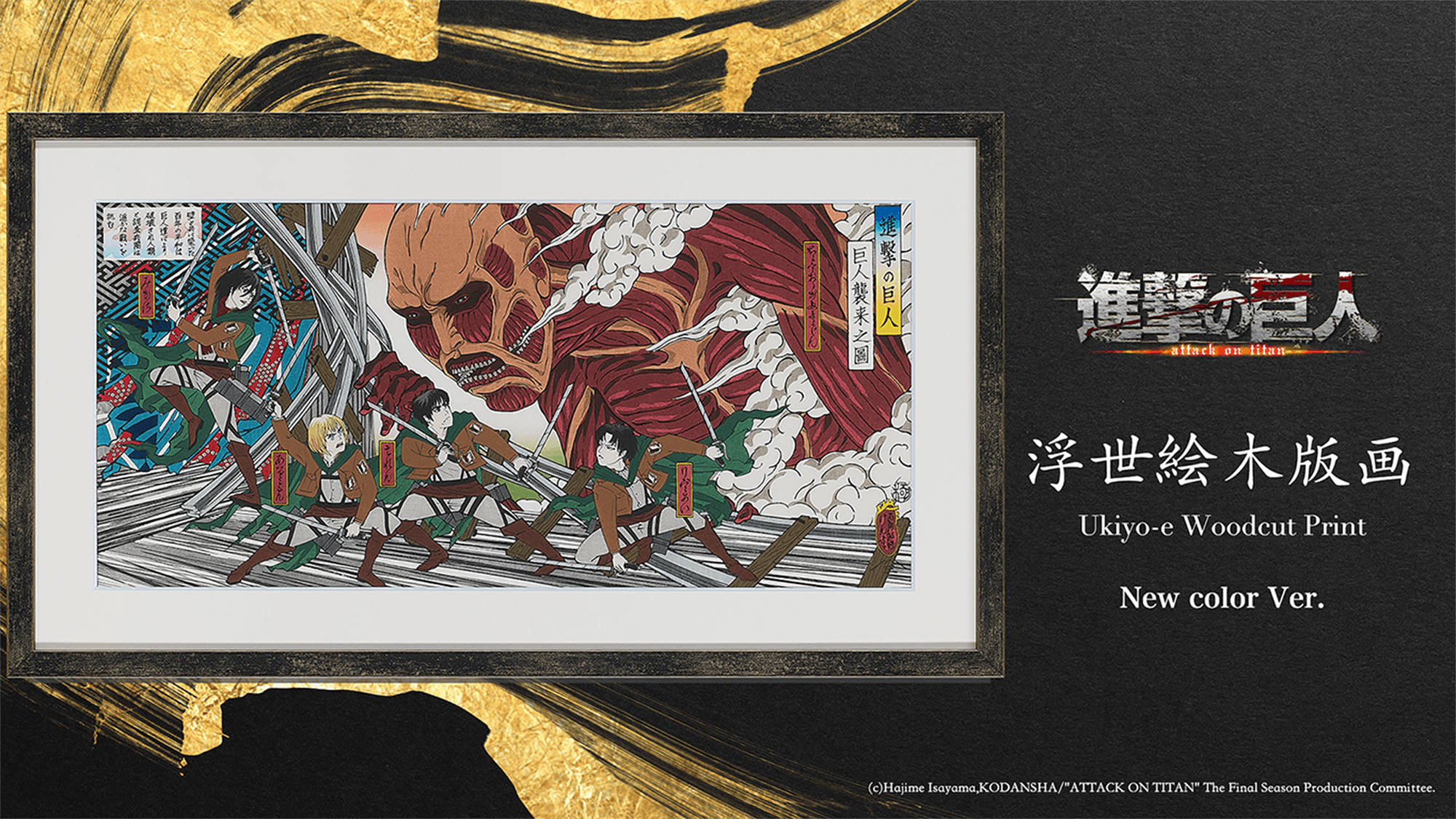"Bringing the essence of Japan to you."
A work of "contemporary ukiyo-e" has been created as a collaboration between Japan's popular Attack on Titan franchise and craftspeople skilled in Japan's popular traditional art of ukiyo-e woodblock printing.
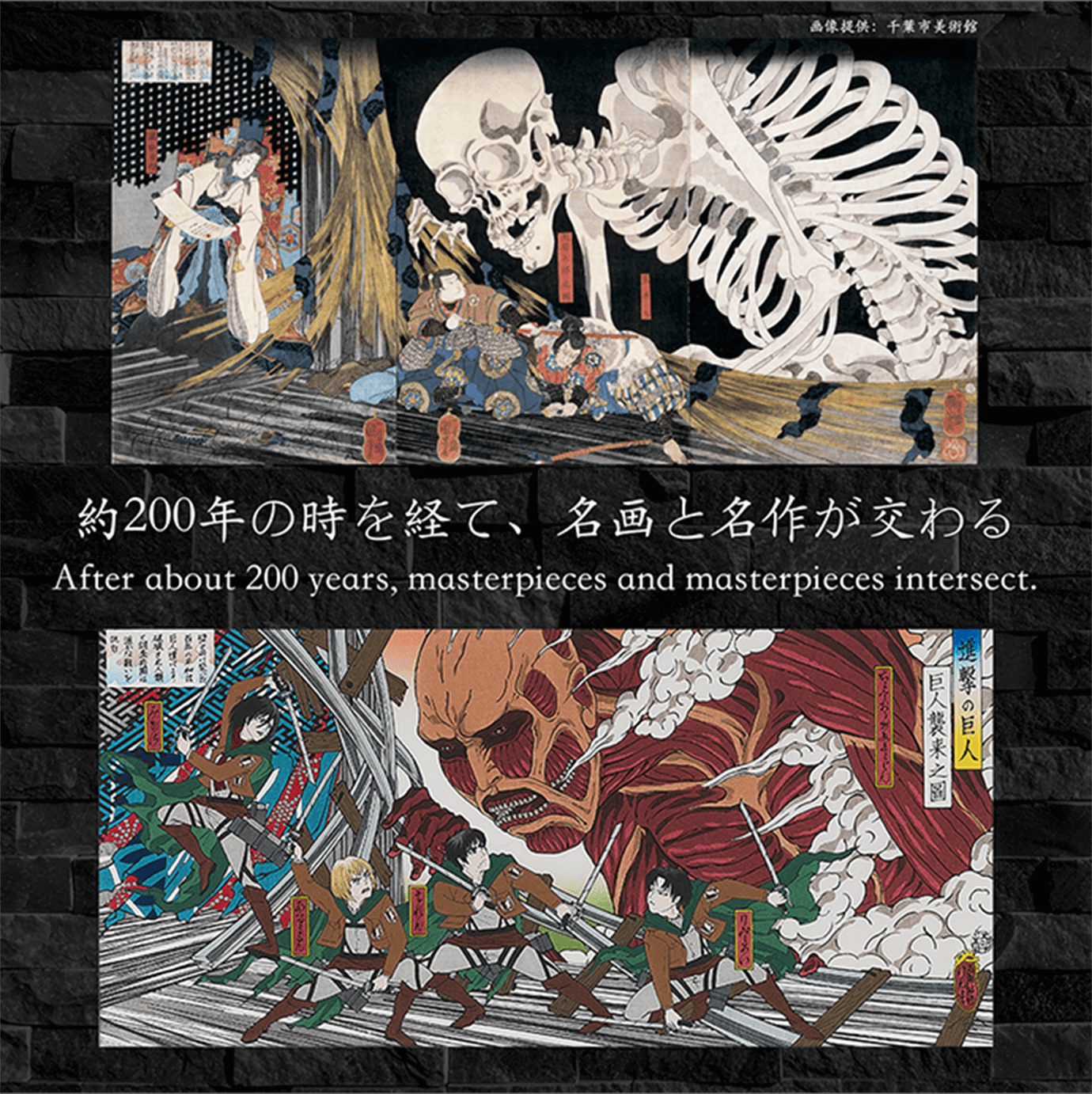
A newly created Japanese work based on the Utagawa Kuniyoshi masterpiece Takiyasha the Witch and the Skeleton Spectre
Utagawa Kuniyoshi, one of the last great masters of his craft, was well known for his fantastical pieces on Japanese mythology and folklore. Active during the late Edo period his work remains popular to this day. His signature work Takiyasha the Witch and the Skeleton Spectre (1845 - 1846) depicts Oya Taro Mitsukuni, a retainer of samurai commander Minamoto no Yorinobu vanquishing a gashadokuro and is one of the most famous ukiyo-e prints, renowned for its unique composition and power. Japanese painter Ken Shiozaki has created a piece that perfectly matches this work and transports it to the world of Attack on Titan, realizing a quintessentially Japanese collaboration that spans 200 years.
Utagawa Kuniyoshi
Utagawa Kuniyoshi (1797 - 1861) was a ukiyo-e artist active during the late Edo period.
He spent his life working his way up to prominence and made a name for himself as “a painter of the fantastic” for his work with mythological themes, as well as his pieces featuring Japanese warriors (Musha-e). Even today he is considered an ukiyo-e master around the world, inspiring many artists and Japanese tattoo artists.
This project's limited 100-print run of such a precious work aims to bring the splendor of ukiyo-e from Japan to the world by focusing on the similarities between Kuniyoshi's work and Attack on Titan.
Limited to 100 pieces worldwide
BUY NOWThe ultimate handmade item for your collection
Ukiyo-e is a beautiful traditional craft which represents Japanese art and culture, but its industry is in danger. There are now less than 100 craftsmen in Japan practicing this ancient art, which dates back to the Edo period. While there is a focus on training young people to increase their ranks, both production and the raw materials required for the craft shrink day by day. Ukiyo-e can therefore be described as a rare, high-quality traditional craft.
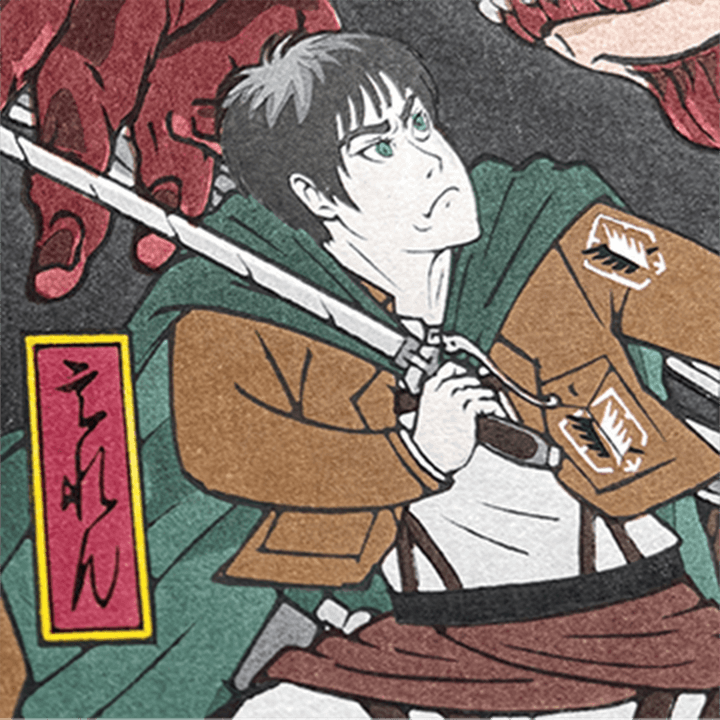
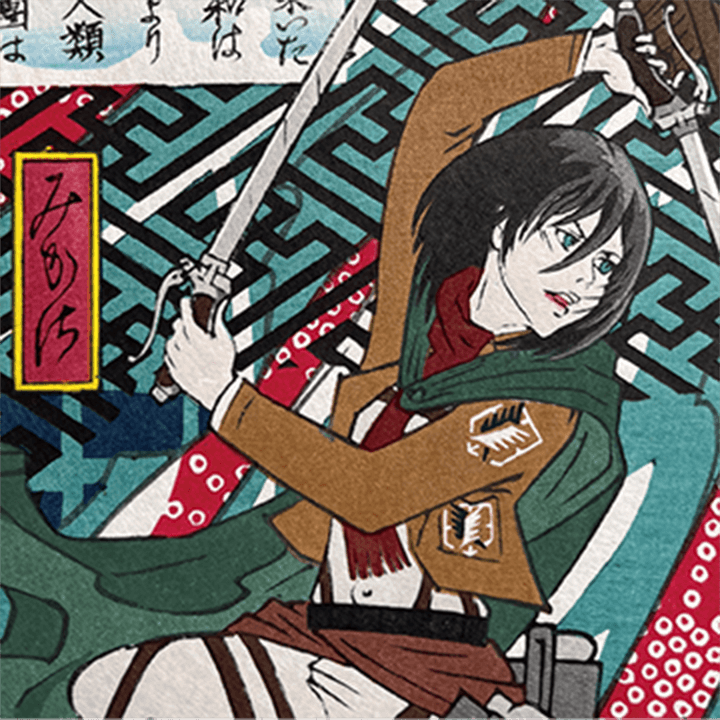
Eren, Mikasa, Armin, and Levi confronting a Titan
To preserve the essence of the characters, the details of their uniforms and capes were reproduced in a traditional Japanese style
The Colossal Titan's face appears through the wall.
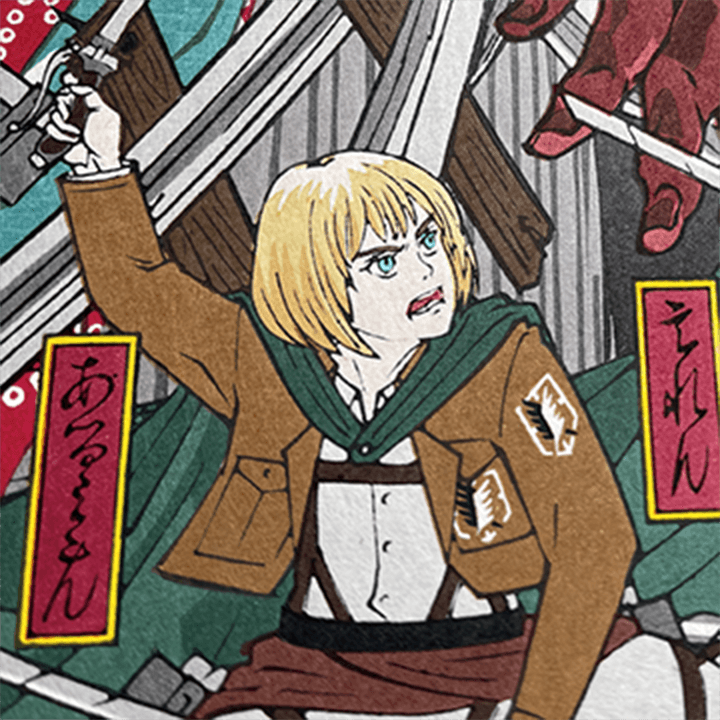
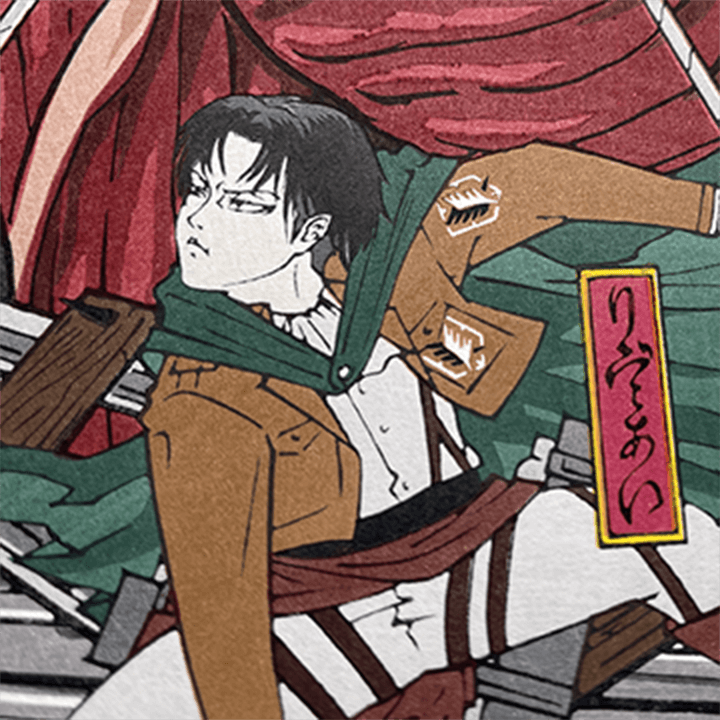

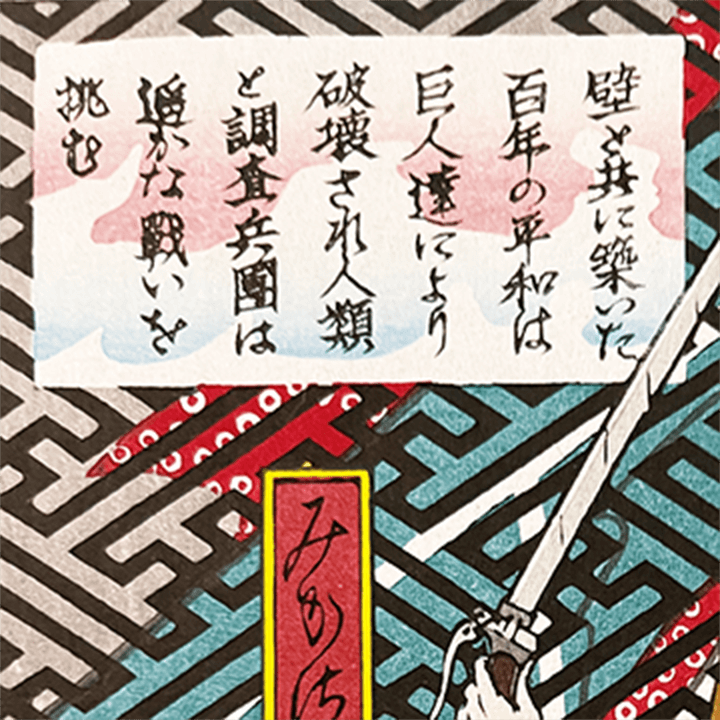
Steam rises from its body and its face wears at fearless expression.
The caption explaining the story that can be seen in Kuniyoshi's work has also been recreated to tell the story of Attack on Titan.
The washi paper used for this ukiyo-e is Echizen Kizuki Bosho made by Living National Treasure Ichibei Iwano.
Living National Treasure Iwano Ichibei and Echizen Kizuki Bosho Washi Paper
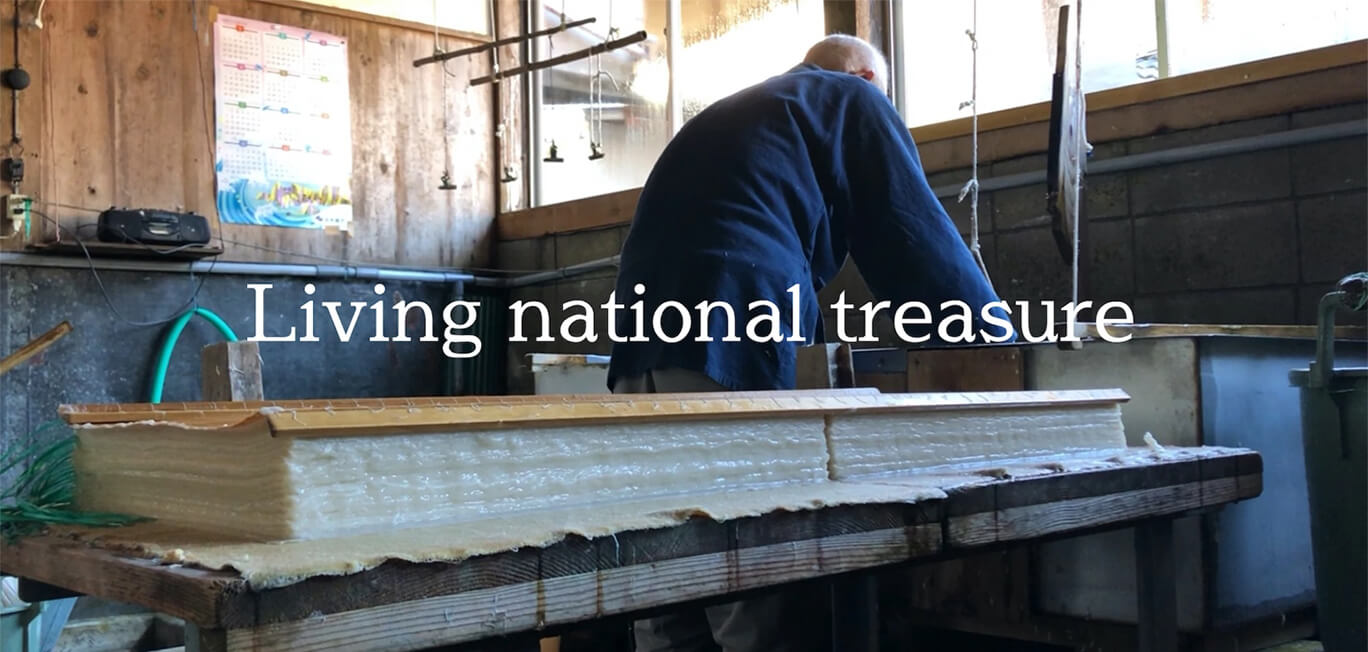
Master washi paper maker Ichibei Iwano was recognized in June 2000 by the Japanese government as a Preserver of Important Intangible Cultural Properties (Living National Treasure) for his work with Echizen Bosho washi paper.
A Living National Treasure is someone who has mastered and preserves an important historical artistic skill. Living National Treasures are designated by the government as valuable cultural heritage. This recognition of skill and importance in the fine arts adds a high-end brand value to the works they are affiliated with or create.
Kizuki Bosho is a type of washi paper made from mulberry tree bark. It is long-established in Japanese tradition and history and is considered to be one of the best types of washi paper.
Used not only for woodcut prints but also for religious rituals and ceremonies, Kizuki Bosho is the ultimate Japanese washi paper, produced preserving the style and texture of washi paper from the Edo period 200 years prior. It is very durable and can withstand the pressure of hundreds of woodcut printings. This formidable paper has been used for the Modern Ukiyo-e with the hopes they will last for another 100 or even 200 years.
Echizen Washi Craftsman / Living National Treasure Ichibei Iwano IX
Born in Imadatecho (Currently "Echizen City"), Fukui
Under the strict tutelage of his father Ichibei Iwano VIII (holder of the intangible cultural heritage Echizen Bosho) and his uncle Masao Iwano, he learned the technique of making traditional Echizen Bosho.
Through the deep study of traditional techniques, he is one of few craftsmen devoted to making high-quality Echizen Bosho.
It is regarded as one of the highest quality types of washi paper, and can be found in the Louvre Museum as the world's best restoration paper.
Attack on Titan Ukiyo-e Woodcut Production Process
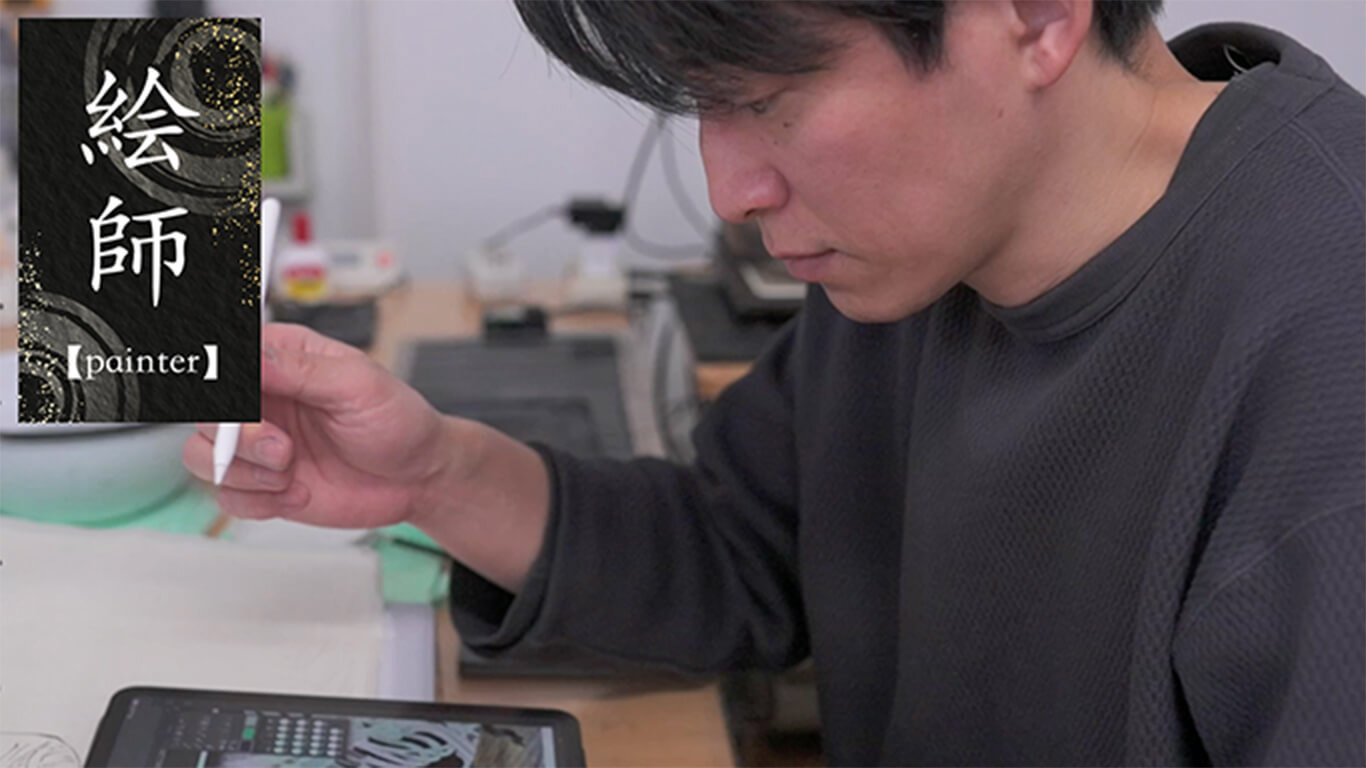
Painter / Ken Shiozaki
Born 1972 in Machida, Tokyo
Tama Art University Department of Fine Arts
A specialist in Japanese painting between the Heian and Edo periods, Shiozaki produces work utilizing the complexity of themes and levels of artistic skill found within his research. In creating two-dimensional works that appeal to the aesthetic sense of modern Japanese people, he is a painter who shows us the possibilities of traditional Japanese painting in the art world.
Places where his work has been displayed:
Ryugenji Temple (Tokyo) / Seirenji Temple (Hiroshima)
Inarisan Komyoin (Kanagawa) / Fumonji Temple (Yamaguchi)
Carving
The process of making a woodcut begins with the separation of the design color-by-color. Each layer of color is cut separately on its own woodblock.
As seen in the video, it is a long process of extremely precise movements, where even one millimeter’s difference can significantly affect the entire piece. The craftsman's ability to perfectly carve out the woodblock without a single error is the result of many years of vigorous training.
Each individual section—the eyes, the hair, figure, the background color and even the text—is carved separately by hand. The woodblock used for carving is very delicate and can easily become damaged during the carving and printing process, which is why ukiyo-e can only ever be produced in limited batches.
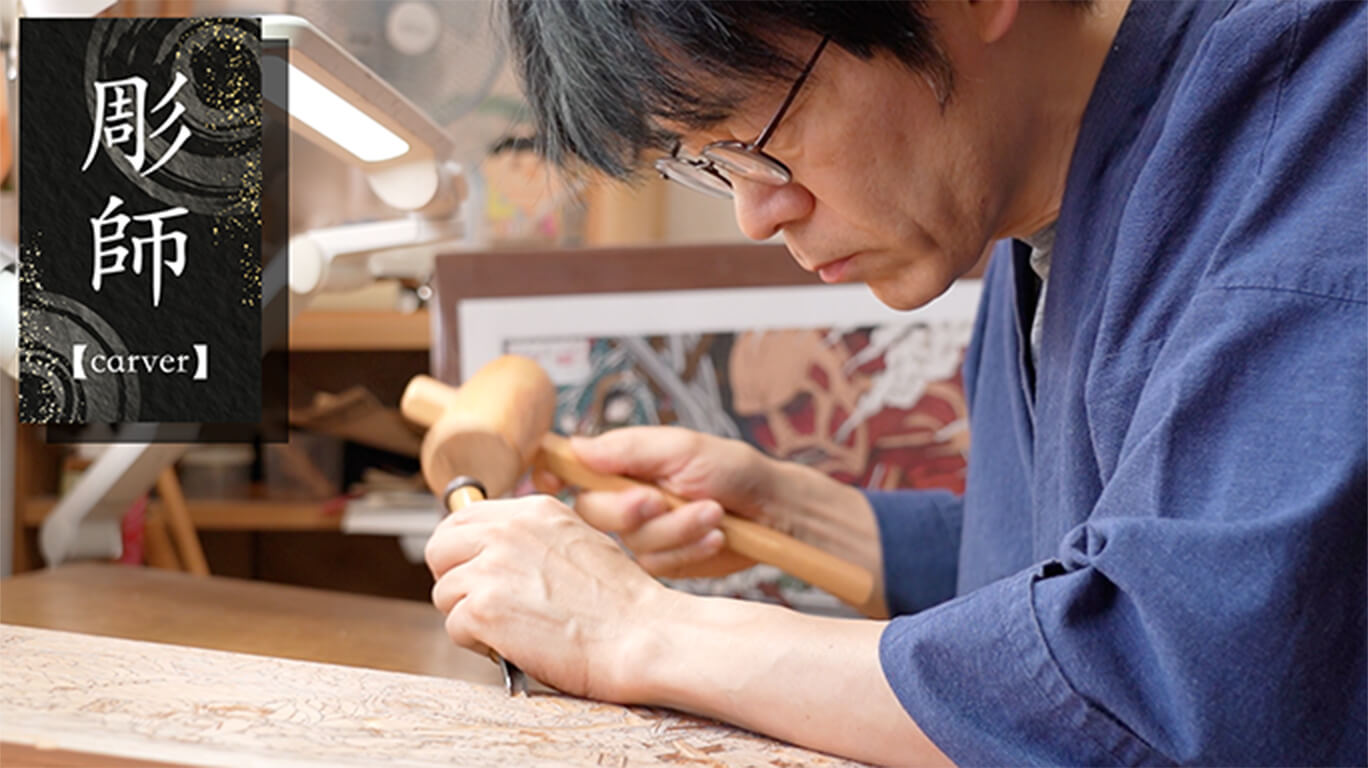
Carver / Shoichi Kitamura
Born 1968 in Kyoto
Kyoto Seika University Department of Fine Arts at Woodblock Printing
Studied woodblock printing under Tomikichiro Tokuriki at the publisher Matsukyu, and under Akira Kurosaki
Studied carving as an apprentice to Osamu Hotta, the carver at publisher Kaneido
Member of the Kyoto Woodblock Printer Association / Deputy Director of the Kyoto Branch of the Ukiyo-e Woodblock Print Carving and Printing Technique Preservation Association
Printing
After the 7 double-sided woodblocks have been carved (14 woodcuts total), the printing process can begin using traditional Japanese pigments. If the pressure used for a layer of printing is too weak or if the placement of one of the layers of print deviates even a small amount, the whole piece is affected. Therefore, this stage in the process once again requires significant craftsmanship and skill.
Besides the complexity of the printing process, it is also difficult to know how the colors will look layered together until they are actually printed. To achieve the desired effect, the craftsman must adjust and correct the paints and pigments used for the final piece many times over in the pursuit for perfection.
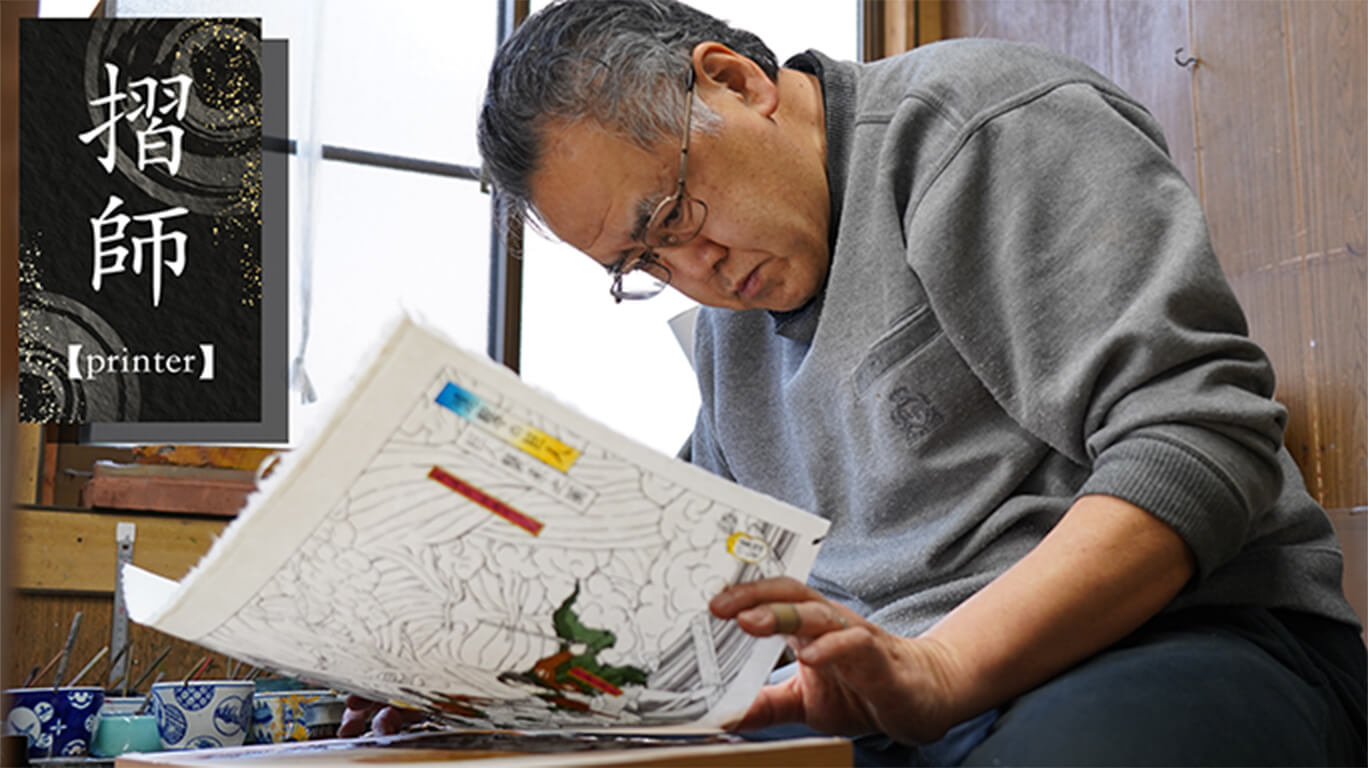
Printer / Makoto Nakayama
Born 1958 in Kumamoto, Kyushu
Kyoto Seika University Fine Arts Department: Western Painting
Studied printing as an apprentice to woodblock printer Keizo Sato at Sato Woodblock Studio
Deputy Director and Current Head of the Kyoto Branch of the Ukiyo-e Woodblock Print Carving and Printing Technique Preservation Association / Director of the Kyoto Woodblock Printer Association
About ukiyo-e
The term ukiyo-e can be translated as "pictures of the floating world," and refers to artworks which flourished during 18th century Japan (Edo Period). The rise in popularity of ukiyo-e can be attributed to advancements in woodcut printing technologies, the increase of familiar subject matter such as famous kabuki theater performers and beautiful geisha, and the contemporary trend of mass-produced reading material. Artists who illustrated these popular reading materials became ukiyo-e painters.
Famous ukiyo-e artists active in the 19th century such as Katsushika Hokusai and Utagawa Hiroshige had a huge influence on western art and culture, with their works bringing about a craze referred to as “Japonisme”. Many artists were influenced by Japonisme, including famous Impressionist painters Claude Monet and Vincent van Gogh.
Tracing back to popular entertainment from the Edo Period, modern-day manga and anime are a part of the continuation of these trends and could be said to be a modern version of ukiyo-e itself.
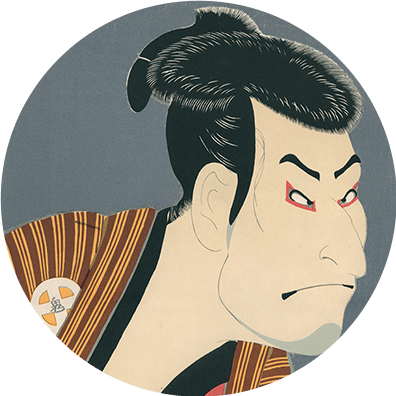
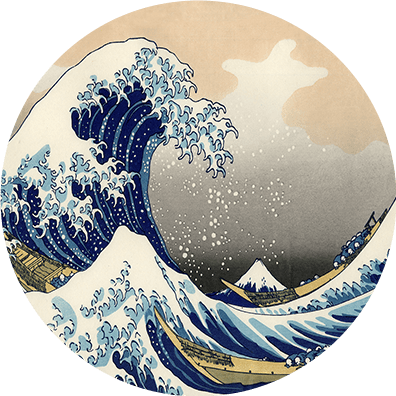
Product
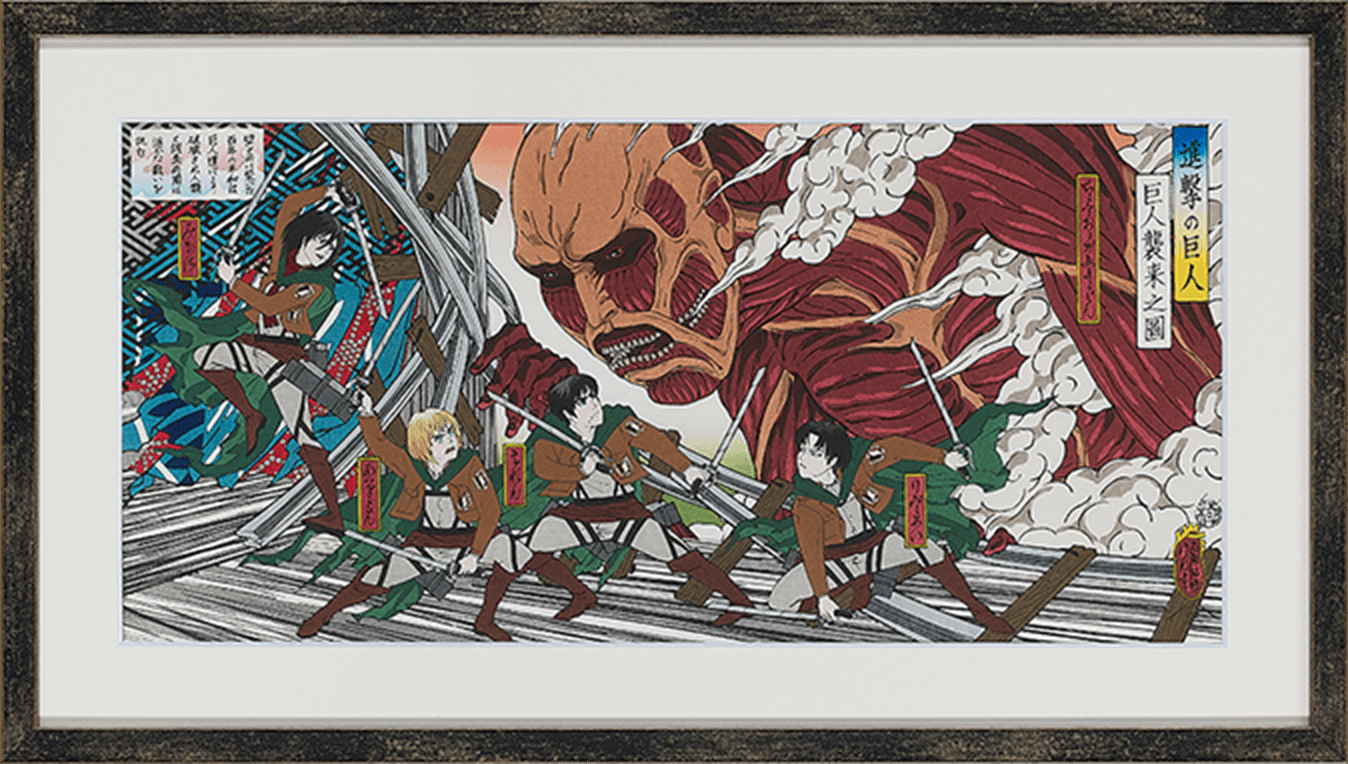
Attack on Titan Ukiyo-e Woodblock Print
"Titan Attack" New Color Version
- Selling Price
- 60,000 JPY & shipping
- Selling Amount
- 100 prints worldwide
- Dimensions
- Artwork (approximately 510mm x 245mm)
Frame (approximately 653 mm x 383 mm) - Frame
- Wood, plywood backing
- Mat
- Paper
- Washi
- Living National Treasure Ichibei Iwano echizen kizuki hosho
- Painter
- Ken Shiozaki
- Carver
- Shoichi Kitamura
- Printer
- Makoto Nakayama

